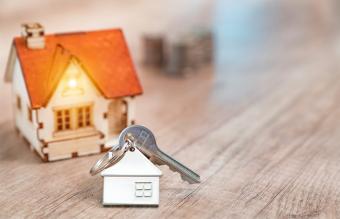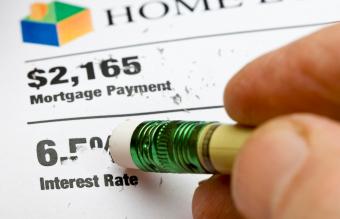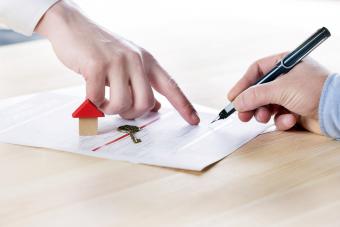
While lenders don't offer a specific single mom home loan product, women who are raising children on their own may be able to access programs that can help them become homeowners.
Challenges for Single Parents
The main challenge for single parents who are looking for home financing is that they must qualify through the lender's underwriting process solely based on their income, credit, and payment history.
Not having a spouse's or partner's income to add to the mix may mean that a single mom has more limitations on how much she can spend on a home. Not all women raising children on their own fall into a low-income category, though, and each person's financial situation is different. Shopping for a home loan is a highly individualized matter.
Single Mom Home Loan Solution: FHA Loan
Single moms looking for help to buy a house may want to consider applying for a Federal Housing Administration (FHA) loan. The loan is insured by the FHA, which means the participating lender can offer the borrower a better deal than for a conventional loan.
For first-time home buyers, an FHA loan means that the minimum down payment is 3.5 percent, as opposed to the minimum 5 percent usually required to purchase a home. The majority of the closing costs or fees can be added to the mortgage, which means that a single mom home loan customer doesn't have to worry about paying those fees out of pocket.
The FHA program was developed to provide mortgage insurance for a home purchase or a refinance of an existing home. The loan could be funded by any approved lender with HUD as the insurer.
Eligibility Requirements
A person who wants to apply for an FHA loan must meet the minimum level of FHA credit qualifications to get a loan. The borrower can arrange for a loan of approximately 96.5 percent financing. The borrower is responsible for paying an insurance premium on the money borrowed as well. The premium is paid by the borrower annually. Some borrowers may also be subject to an FHA funding fee.
Mortgages for a Fixer-upper
Another option that is available to single moms is to get funding to buy a house that needs some repairs. The HUD 203(k) program is set up to help people get the funding they need to purchase or refinance a home with the repair or improvement costs included in the funds that are advanced.
The FHA insures the loan. As in the case of the loan option mentioned above, the money is advanced by an approved lender. As a condition, the HUD 203(k) is only available to people who are planning to occupy the home themselves. The down payment required for this type of mortgage product is 3.5 percent of the purchase price plus the repair costs for the property.
Applying for the HUD 203(k) Loan
The prospective home owner would start the process of getting this type of mortgage by finding a property she is interested in purchasing. The sales contract must state that the buyer will be applying for a 203(k) loan and that the sale is conditional on the buyer obtaining approval for the purchase price and the repair costs.
Next, the buyer would apply for a mortgage from an approved lender. A detailed proposal is submitted that includes the work that needs to be done and an estimate for each repair or improvement project. An appraisal is prepared indicating what the value of the project will be after the renovations have been completed.
If the borrower is able to pass the lender's creditworthiness test, the loan is advanced for the purchase or refinance costs as well as the remodeling and closing costs. The amount of the funding extended to the borrower will also include a contingency amount of 10-20 percent of the remodeling costs. It is used to pay for any extra work that is not covered in the original proposal presented to the lender.
When the sale closes, the seller is paid off. Any remaining funds are placed into an escrow account to cover the repairs and improvements made to the property. If the property is not going to be occupied while the repairs or renovations are completed, the borrower can choose to have up to six mortgage payments put into these costs.
The funds held in escrow are paid out to the homeowner during construction by way of draw requests for completed work. To make sure that each phase of construction is completed, a total of 10 percent of the draw is held back until the homeowner advises the lender that the work is completed. The lender will determine there are no other liens on the property before releasing the funds.
Either of these options could be considered for a single mom home loan, which help to make owning a property a much easier process.
Local Resources
Single moms who struggle financially may be able to get help buying a home from local organizations. Some charitable groups and government organizations provide grants and low interest loans to people who want to buy homes yet do not qualify for traditional mortgage funding.







